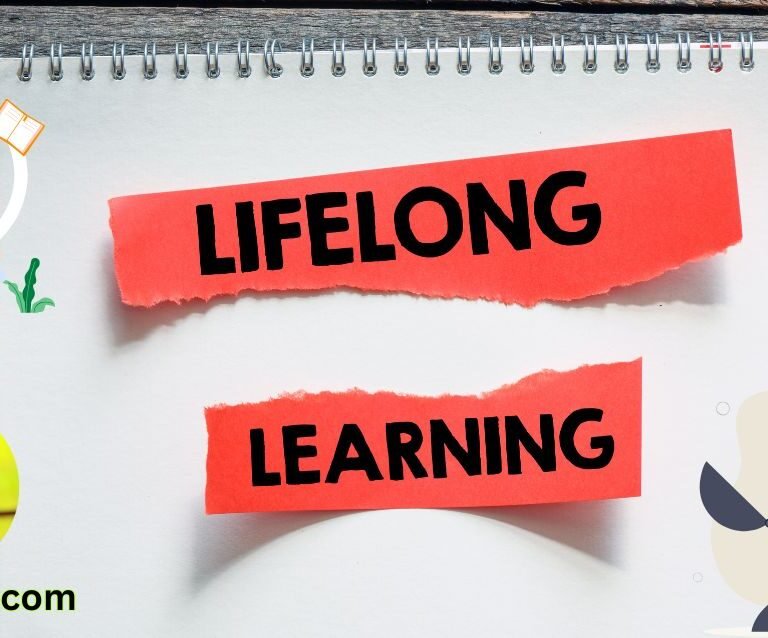Wikipedia
Wikipedia, launched on January 15, 2001, stands as a significant milestone in the landscape of digital information sharing. Founded by Jimmy Wales and Larry Sanger, it was established with the aim of creating a freely accessible online encyclopedia that would enable users from around the world to contribute and disseminate knowledge. This unique model of content generation allows Wikipedia to harness the collective expertise of volunteers, making it a truly collaborative effort.
The primary purpose of Wikipedia is to provide a platform where individuals can access a vast array of information across numerous fields, including history, science, literature, and technology. With millions of articles available in multiple languages, Wikipedia serves as a vital resource for students, educators, researchers, and the general public. The encyclopedia is built on the principles of transparency, neutrality, and verifiability, encouraging contributors to cite reliable sources to support their additions.
One of the distinguishing features of Wikipedia is its open-editing model, which permits anyone with internet access to modify content. This collaboration fosters an environment where knowledge can grow and evolve, reflecting the most current information available. The platform’s robust infrastructure also includes a range of editorial and community guidelines that help maintain the quality and integrity of the content. As a result, Wikipedia has become an essential tool for navigating the vast, complex web of information in today’s digital age.
Moreover, the global reach of Wikipedia underscores its significance in promoting accessibility to knowledge. By breaking down barriers to information and creating a multilingual repository of human understanding, Wikipedia embodies the ethos of free knowledge for all, aligning with the larger goal of democratizing information in the modern world.
The Wikipedia Model: Open Editing
Wikipedia operates on a unique collaborative editing model that sets it apart from traditional encyclopedias. This innovative approach allows anyone with internet access to contribute to the vast repository of knowledge that Wikipedia represents. Users, often referred to as ‘wikipedians’, can edit existing articles or create new ones, encompassing a wide range of topics. This open editing model democratizes information dissemination, as contributions come from diverse individuals, each bringing their distinct viewpoints, experiences, and expertise.
The engagement of wikipedians is crucial in maintaining and enhancing the quality of articles on Wikipedia. Volunteers from all around the world actively monitor and edit content to ensure accuracy and comprehensiveness. These contributors often work tirelessly, driven by a shared belief in the importance of free access to knowledge. The collaborative nature of Wikipedia also means that numerous editors can review and refine articles, leading to a more balanced and inclusive representation of information.
However, the open editing model is not without its challenges. With the potential for anyone to edit, there arises a risk of misinformation or bias being introduced into articles. To address this, Wikipedia has implemented various guidelines and policies that govern contributions. These include rules on verifiability, neutrality, and reliable sourcing, ensuring that the content remains trustworthy. Additionally, the Wikipedia community places an emphasis on discussion and consensus, enabling wikipedians to collaboratively resolve disputes and improve content through constructive dialogue.
In essence, the Wikipedia model of open editing exemplifies the power of collaboration in knowledge creation. By inviting contributions from a global pool of users, Wikipedia not only expands the breadth of information available but also reflects a collective effort towards the ongoing development of human knowledge.
Diversity of Content and Languages
Wikipedia stands as a testament to the power of collective knowledge, exhibiting a remarkable diversity in its content and linguistic representation. As of October 2023, the platform boasts over 6 million articles in English alone, making it the largest single-language collection available on the site. This extensive repository covers an array of topics, ranging from historical events and scientific theories to popular culture and local trivia, reflecting the multifaceted interests of its contributors and users.
Moreover, Wikipedia’s commitment to inclusivity is evident in its support for multiple languages. It features editions in over 300 different languages, catering to the diverse linguistic backgrounds of its global user base. The diversity of content across these language editions varies significantly; for instance, while the English version remains the most comprehensive, languages such as German, French, and Spanish also contain millions of entries, showcasing substantial content depth. Smaller language editions, such as those in Swahili, Icelandic, or Welsh, hold thousands of entries, illustrating the platform’s aim to promote knowledge accessibility, regardless of linguistic heritage.
Statistics reveal that Wikipedia’s total article count surpasses 60 million across all language editions. This extraordinary figure underscores the collaborative effort of millions of contributors who create and edit entries daily. The platform thrives on the principle of open editing, which not only democratizes knowledge acquisition but also ensures content diversity. Each language community contributes uniquely to the overall encyclopedia, enriching the world’s understanding of varied cultures, perspectives, and information. The vast array of articles available on Wikipedia thus creates an invaluable resource for users worldwide, making it a pivotal player in the information age.
Wikipedia’s Five Pillars
Wikipedia operates fundamentally on five key pillars that guide its community members in content creation and collaborative editing. These pillars serve as the foundational principles that ensure the integrity, accuracy, and inclusiveness of the content provided on this vast digital encyclopedia.
The first pillar is that Wikipedia is an encyclopedia. This emphasizes the site’s commitment to providing a comprehensive collection of knowledge across a wide array of subjects. Content must be verifiable and should aim to enhance readers’ understanding of complex topics. Therefore, Wikipedia encourages contributors to adhere to this encyclopedic standard by ensuring that articles are objective and informative.
The second pillar states that it is freely accessible. All users can read, edit, and contribute to Wikipedia without any cost, emphasizing the site’s democratic approach to information sharing. The belief in free knowledge underlines Wikipedia’s ethos, allowing a greater number of people to participate in generating and refining content, making it a truly collaborative effort.
The third pillar highlights neutrality. A core principle of Wikipedia is to present information in a neutral point of view (NPOV), thus promoting fairness and balance in its articles. Contributors are encouraged to write articles that fairly represent all significant viewpoints on particular issues, creating a sense of trust and reliability in the information presented.
The fourth pillar pertains to the community. Wikipedia thrives on the contributions of its diverse user base, which includes volunteers from around the globe. The collaborative environment fosters cooperation and encourages the sharing of knowledge and expertise among editors, which enhances the quality of encyclopedia entries.
Lastly, the fifth pillar underscores the importance of no firm rules. While Wikipedia has guiding principles, it acknowledges that flexibility is crucial for its evolving nature. Changes in guidelines reflect the variable needs and dynamics of the community, allowing continuous growth and adaptability.
The Importance of Verifiability
Verifiability is a cornerstone principle of Wikipedia, ensuring that information presented on the platform is credible and trustworthy. This requirement mandates that all content must be supported by reliable sources, reflecting a commitment to accuracy and evidential integrity. When contributors edit or create entries, they are encouraged to reference data from authoritative publications, scholarly articles, and other reputable materials. This practice safeguards against the spread of misinformation and upholds the encyclopedia’s reputation as a reliable resource for learners and researchers worldwide.
The necessity for verifiability extends beyond mere citation; it requires that the information is available for verification by readers. This means that the referenced sources must be accessible, allowing users to consult the original materials for further context or fact-checking. This transparency fosters a collaborative environment where users not only consume information but also engage critically with the content presented. By relying on verifiable sources, editor contributions are anchored in established knowledge, further promoting Wikipedia’s mission to provide free access to accurate information.
Moreover, this emphasis on verifiability plays a pivotal role in the dynamic process of collaborative editing. As users from diverse backgrounds come together to enhance entries, the emphasis on citing credible sources ensures that individual biases are minimized. The collaborative nature of Wikipedia encourages contributors to discuss and debate the appropriateness of sources, leading to collective decisions about the reliability of information. The result is a constantly evolving body of work that reflects a consensus of knowledge while valuing the importance of accurate representation. Ultimately, verifiability serves as a protective measure, fostering an environment of trustworthiness and engagement among Wikipedia’s global community.
Quality Control and Vandalism Prevention
Wikipedia, often regarded as the world’s largest collaborative encyclopedia, relies on a robust system of quality control to ensure that the information presented is accurate and reliable. One of the primary mechanisms for maintaining this quality is the active involvement of experienced editors, who routinely patrol recent edits. These individuals, often referred to as “WikiGnomes,” possess a deep understanding of Wikipedia’s guidelines and are vigilant in tracking modifications to articles. Their role becomes crucial, particularly in identifying any deviations from factual accuracy or formatting standards.
The structure of Wikipedia allows for easy reversal of errors, which promotes a collaborative environment that encourages users to contribute without fear of permanent mistakes. If an edit is identified as incorrect or biased, it can be reverted with just a few clicks. This feature not only assists in maintaining the integrity of articles but also empowers editors and contributors to continuously enhance the quality of content. Furthermore, Wikipedia’s history page allows users to view past versions of articles, providing transparency and an opportunity for collective learning from previous mistakes.
To tackle vandalism and misinformation, Wikipedia employs a variety of preventive measures. The platform utilizes automated bots that monitor recent changes for malicious edits. These bots can quickly identify patterns typical of vandalism, such as repetitive and nonsensical alterations. When detected, the bots can automatically revert changes or flag them for review by human editors. Additionally, certain pages that are prone to vandalism, such as high-profile articles, are semi-protected, restricting editing access to established contributors. By implementing these strategies, Wikipedia strives to uphold a standard of quality that reflects its mission as a neutral and reliable informational resource.
Dynamic Nature of Wikipedia
Wikipedia stands out distinctly from traditional encyclopedias in terms of its dynamic nature. Unlike conventional encyclopedias, which undergo lengthy editorial processes and updates at periodic intervals, Wikipedia enables content to be modified and refreshed almost instantaneously due to its collaborative platform. The concept of a living document allows experts and casual users alike to contribute their knowledge regularly, thereby ensuring that the information presented is not only accurate but also up-to-date.
In this environment, contributors can swiftly add new data, refine existing entries, or correct errors as they become aware of them. This attribute is particularly important in fast-evolving fields such as technology and science, where information can quickly become obsolete. The immediate nature of updates on Wikipedia renders it a reliable resource for contemporary knowledge, maintaining relevance in a world where information is constantly changing and growing.
Moreover, the transparency of Wikipedia’s editing history allows users to track changes over time, offering insights into how particular entries have evolved. Each article contains a history page where anyone can view the modifications made, who made them, and when those edits occurred. This feature not only fosters accountability but also encourages a culture of continuous improvement among contributors.
Furthermore, Wikipedia’s expansive reach allows for the inclusion of diverse perspectives, where contributors from various backgrounds can share their insights on a multitude of subjects. This aspect is one of the driving forces behind its dynamic content, enabling writers to incorporate different viewpoints and emerging trends that may not yet be represented in traditional encyclopedias. Ultimately, this vibrant dynamic framework contributes to Wikipedia’s status as an indispensable resource for accurate and current information across the globe.
Researching with Wikipedia: A Practical Guide
Wikipedia serves as a valuable research tool for students, professionals, and casual readers alike. While it is known for its vast array of information, using Wikipedia effectively requires a strategic approach to ensure the reliability of the data being utilized. Care should be taken in evaluating the information presented to avoid misinformation.
The first step in effectively using Wikipedia for research is to identify reputable articles. Wikipedia provides a variety of assessments for each entry, including quality ratings and citations. Look for articles marked as “good” or “featured” for content that has undergone rigorous scrutiny. Additionally, checking the discussion page of an article can provide insight into any ongoing debates regarding its accuracy, helping to gauge the reliability of the information presented.
Utilizing citations is critical when leveraging Wikipedia as a source. Each article includes a references section which cites sources used to compile the information. These references often lead to more authoritative texts, academic papers, or reliable websites. By exploring these citations, researchers can verify facts and delve deeper into a subject while ensuring the quality of their references. It also encourages critical thinking about the sources of information, increasing the robustness of research findings.
Cross-referencing information found on Wikipedia with external sources cannot be overstated. The platform, while comprehensive, is user-generated and can contain errors. Therefore, it is advisable to consult traditional academic resources such as books, peer-reviewed journals, or reputable websites to confirm the facts gathered. This approach will enhance the credibility of research and prevent the dissemination of incorrect information.
Wikipedia can be a useful starting point for research; however, diligence in verifying facts and critically evaluating the data is essential. Careful usage of citations and external references will strengthen research efforts, ensuring that information is both accurate and reliable.
The Significance of Wikipedia in the Digital Age
Wikipedia has emerged as a cornerstone of knowledge dissemination in the digital age, revolutionizing how individuals access and engage with information. As a collaboratively edited platform, it enables users worldwide to contribute, edit, and refine content across a vast array of topics, highlighting the essential role of communal intelligence in shaping collective learning. This democratic approach to creation ensures that although the content is vast and varied, it continuously evolves through the contributions of millions of volunteer editors who strive for accuracy and thoroughness.
In terms of education, Wikipedia acts as a significant resource not only for casual readers but also for students and researchers. The platform serves as an initial point of reference, allowing users to gather foundational knowledge before delving deeper into specialized literature. It encourages critical thinking and information literacy, as users are often prompted to scrutinize sources, verify facts, and explore linked references. Such an environment fosters collaborative learning, pushing the boundaries of traditional educational paradigms and harnessing collective expertise.
Moreover, the significance of Wikipedia extends into the realm of cultural representation. By democratizing content creation and ensuring multiple viewpoints are addressed, Wikipedia encourages the inclusion of marginalized voices, thus promoting diverse narratives and preventing historical bias. This evolution is paramount in our increasingly interconnected world, where varied perspectives enhance not only personal knowledge but also societal understanding. The platform’s open-access model enhances its role as a reliable educational tool, breaking down barriers to information, and promoting lifelong learning.
Overall, Wikipedia’s contributions as a collaborative encyclopedia are undeniable, solidifying its status as an indispensable resource in the digital landscape. By continuously adapting and evolving, it underscores the importance of community-driven knowledge sharing in our pursuit of understanding and education.









